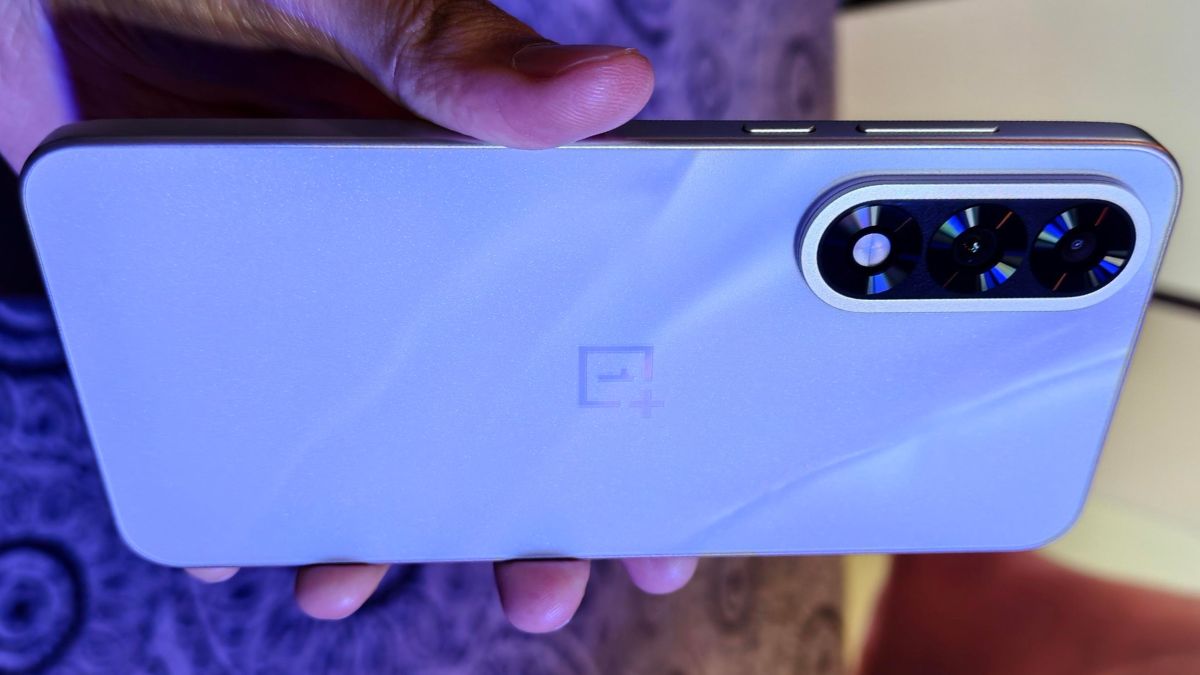OnePlus Nord 5 smartphone review: Great budget choice for high-end mobile gaming
 OnePlus Nord 5
OnePlus Nord 5
The OnePlus Nord series has been among the top sought-after value offerings in the Indian smartphone market for the past several years. Slowly and steadily, it has been growing in sales figures while coming up with upgrades.
The new Nord 5 brings along some upgrades (and perhaps, some downgrades) from the well-liked Nord 4. For a base price of ₹31,999, ₹34,999 for the middle model, and ₹37,999 for the highest one, let us see if this is worth the price tag and your consideration:
The first thing you might notice on the Nord 5 is its marble and satin finish back. It isn’t a metal unibody this time, like the Nord 4, but a combination of plastic and glass—yet it did not feel inexpensive. You get rounded corners, thin bezels, and it might take you a bit to realise this is made of plastic with glass over it, especially in the back of the phone.
The camera bump, wrapped in an oval-shaped cutout, looks nice while the familiar OnePlus branding sits in the middle of the back. The front 6.83-inch display (19.8:9 aspect ratio) has Corning’s Gorilla Glass 7i for better protection.
The right side carries the volume buttons and a dedicated Plus key (more on that later), while the left side has the Alert button—it is not a slider. The bottom houses the dual SIM card tray slot, USB type C port, primary mic and one outlet of stereo speakers; the top has the other outlet for speakers, infrared port and the secondary mic.
The phone is IP65 dust and water-resistant and weighs 211grams, so it’s not very light, but its weight distribution is quite good.
Coming to the display, you get a 6.83-inch 1.5k (2800x1272) AMOLED with support for up to 144Hz refresh rates. This is a good quality panel that can also handle HDR content well without struggling with darker scenes. It has good viewing angles, colour reproduction and crisp text reading. I preferred to use it in the Natural mode, while some might prefer the default Vivid mode.
The phone sports a dual camera setup—a 50MP (f/1.8) main camera and an 8MP (f/2.2) ultra-wide camera. The phone’s camera performance is consistent and good in terms of details from the main camera. It can handle its own in low-light, though there can be noise and colour degradation there depending on your subject, which isn’t surprising. You can shoot 4K videos at up to 60 frames per second.
The front-facing 50MP (f/2.0) camera (with autofocus) is perhaps the best OnePlus has got on a Nord device. Shots come out clear, detailed and have more than good enough dynamic range for your social media use. The camera app is generally responsive, and there wasn’t too much shutter lag either.
Equipped with Qualcomm’s Snapdragon 8s Gen 3 chipset (up to 3GHz octa-core processor, Adreno 735 GPU) along with 12GB LPDDR5X RAM and 256GB UFS3.1 internal storage (also comes in 8GB + 128GB and 12GB + 512GB configurations). It’s running on Android 15-based OxygenOS 15 with the June security patch installed.
The chipset here isn’t a huge upgrade from the Nord, while the internal storage has been a bit of a downgrade from the UFS 4.0 used earlier. I found its day-to-day performance to be up to the mark. No stuttering in social media apps, smooth app switching, as well as a typing experience.
Playing high-resolution videos or having music playback in the background while you scroll through some other app worked without any issues.
For gaming, you can expect to play BGMI at 90Hz and 144Hz with frame boosting, though I would prefer 90Hz since this is the game’s native playback and produces just nicer playback; You can also play a game like Genshin Impact at 60Hz.
OxygenOS has brought back OnePlus’ own dialer. Its feature-rich AI translation and summary option seems to be in a beta mode since it doesn’t perform so well so far, and other features like smart calling for dual SIM cards, and so on. The Plus key can be used to access Gemini or keep the current screen content in memory, which can be later used for some input for AI.
Powered by a 6,800mAh battery, the phone lasted a day, and then some, almost every single time I put it to full charge. Charging from 1 per cent to full can take, on average, 70-80 minutes, which is fine, but the issue I noticed was this can vary a lot—it can sometimes take an additional 20 minutes out of nowhere, without anything extra running. Otherwise, the battery experience was generally good, plus I didn’t see the phone heating up too much either.
The dual stereo speakers on the phone are loud, clear and good enough for your personal media and gaming needs indoors.
There’s no eSIM support, but there’s an ORoaming option that you can activate for international roaming on your device. WiFi and GPS performance are top notch, and 5G network reception on average was also quite good for working on the go with another device connected to it over its WiFi hotspot.
So, the thing is, the Nord 5 isn’t a huge upgrade over the Nord 4. The Nord 4 at its current price is still a good buy, while the Nord 5 is more suited for those who like a bit of higher-end gaming with good camera performance around the 32k mark.
Gadgets Review